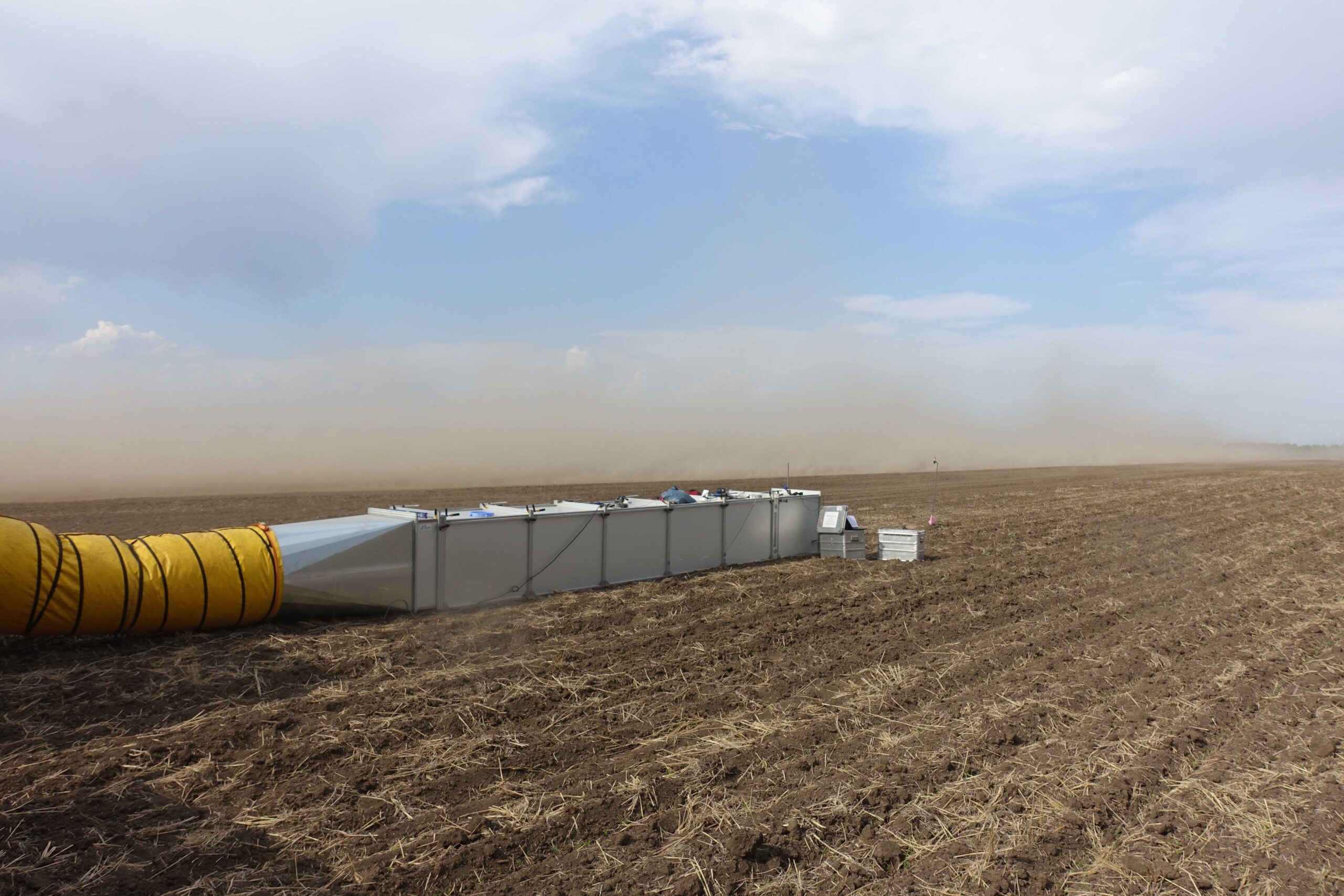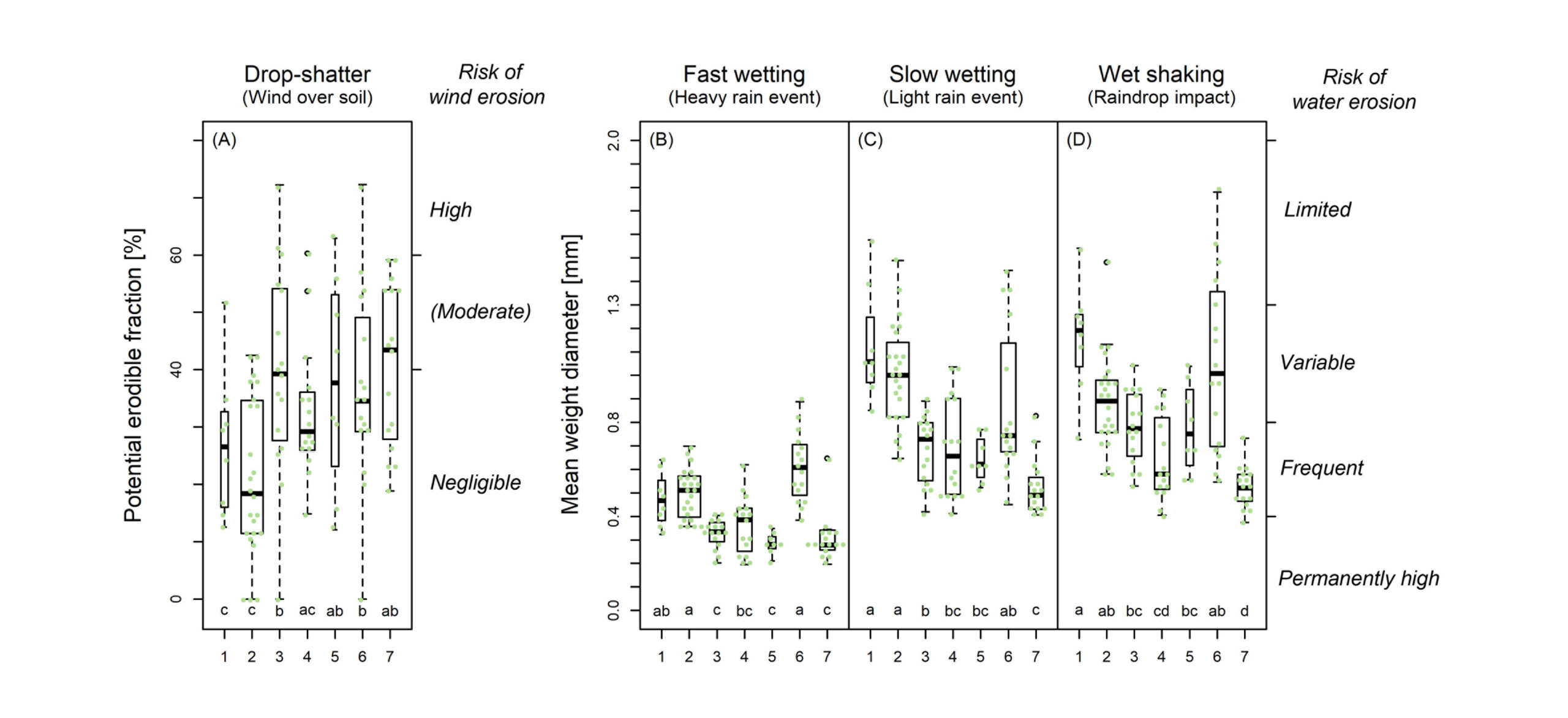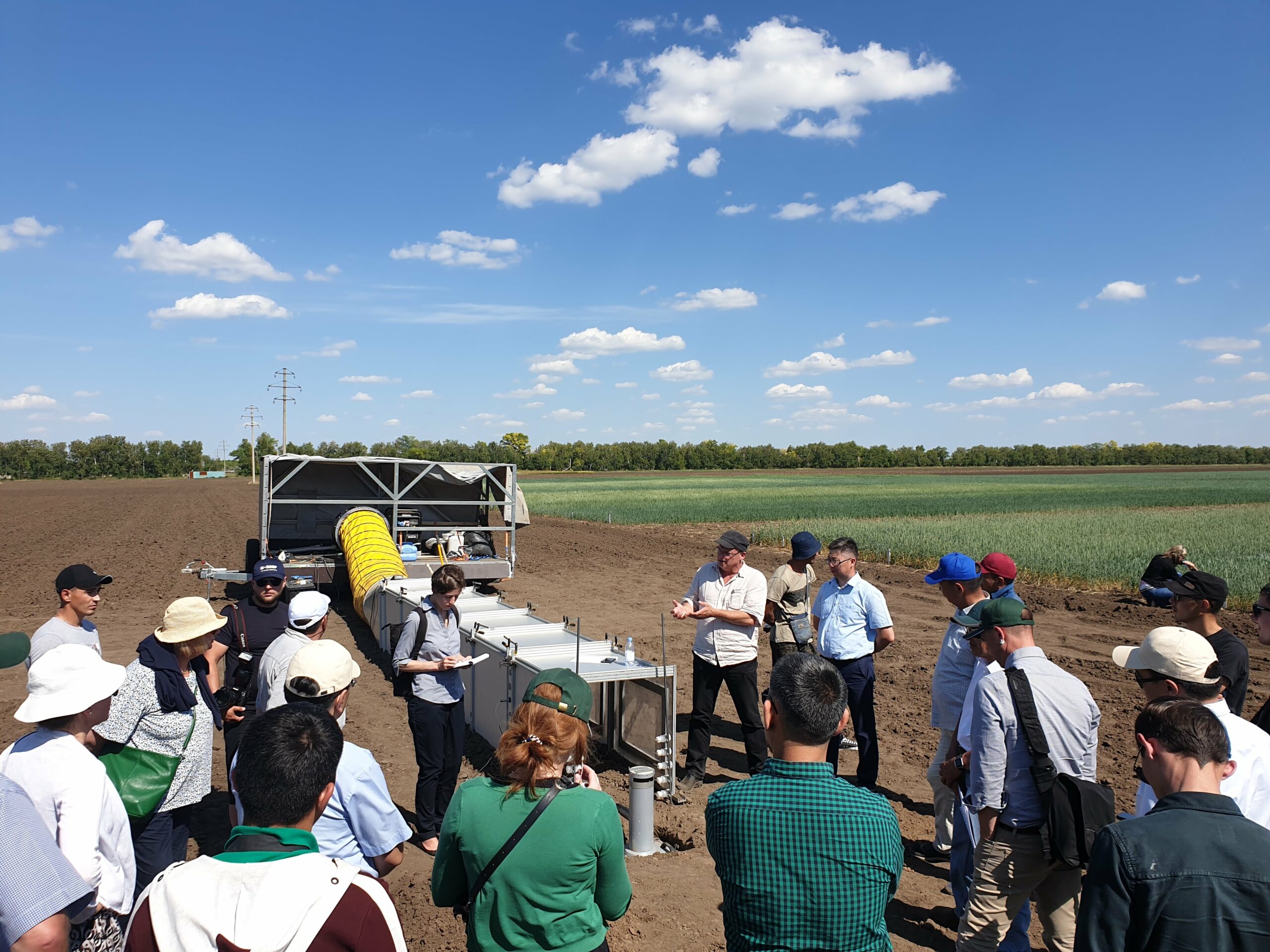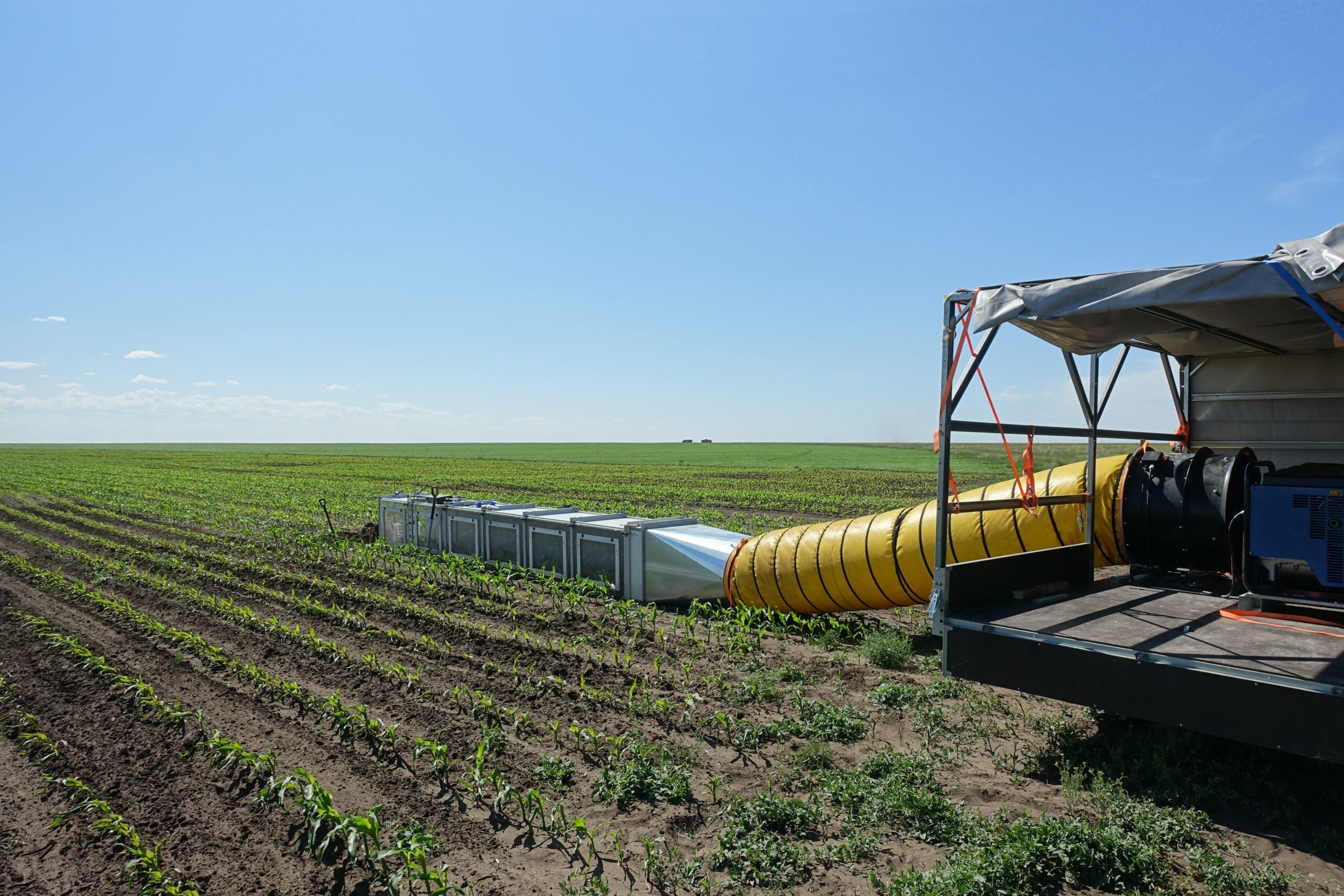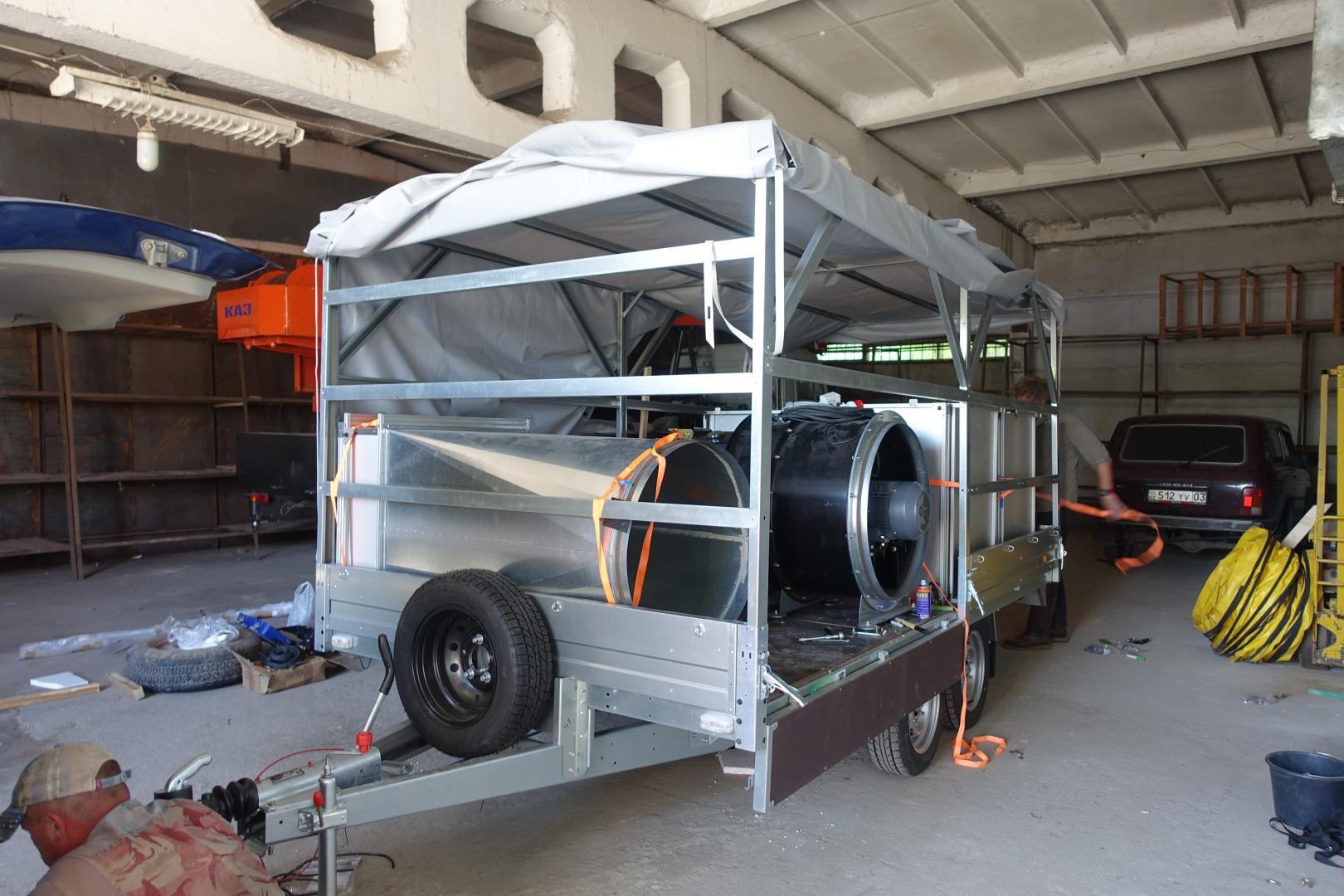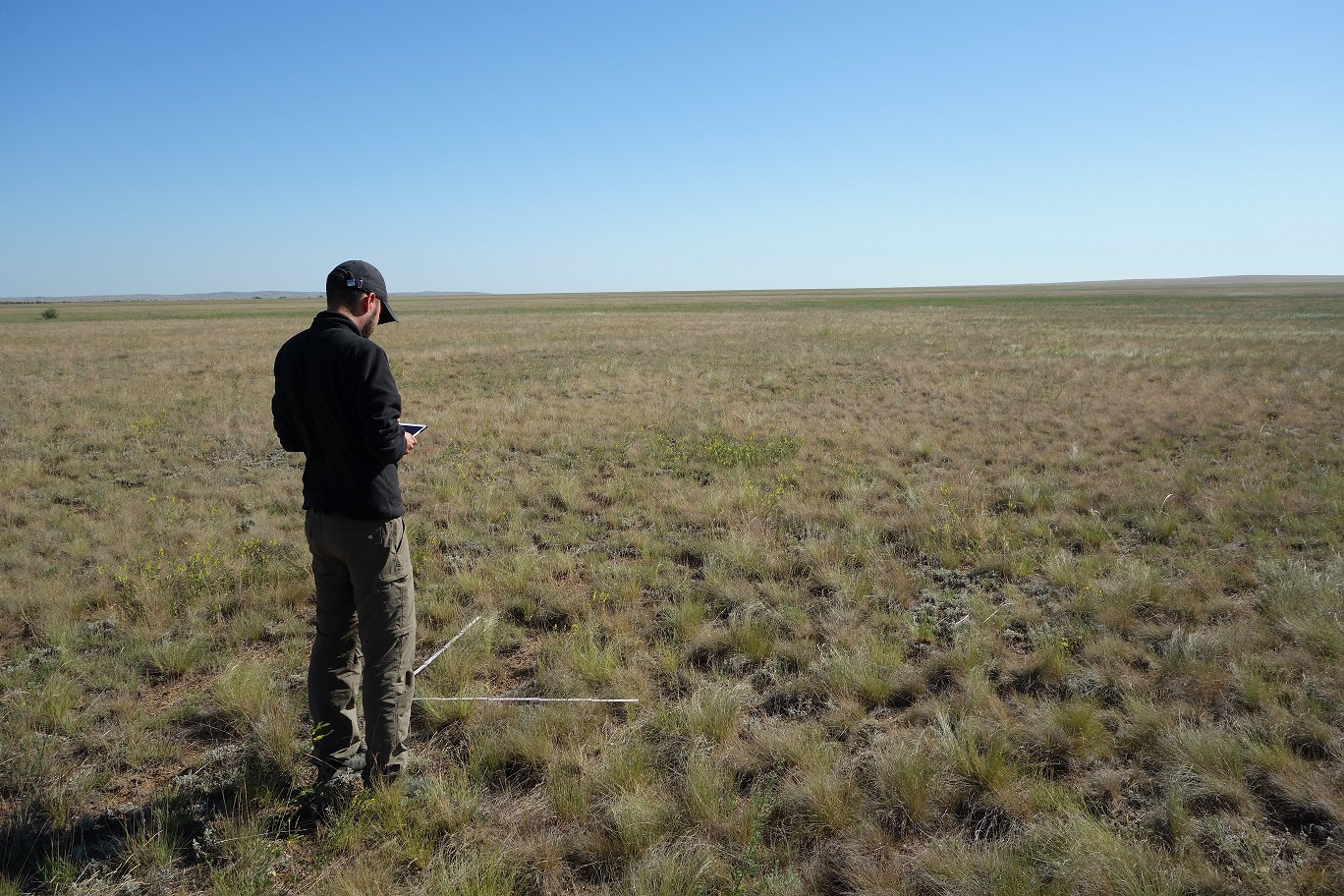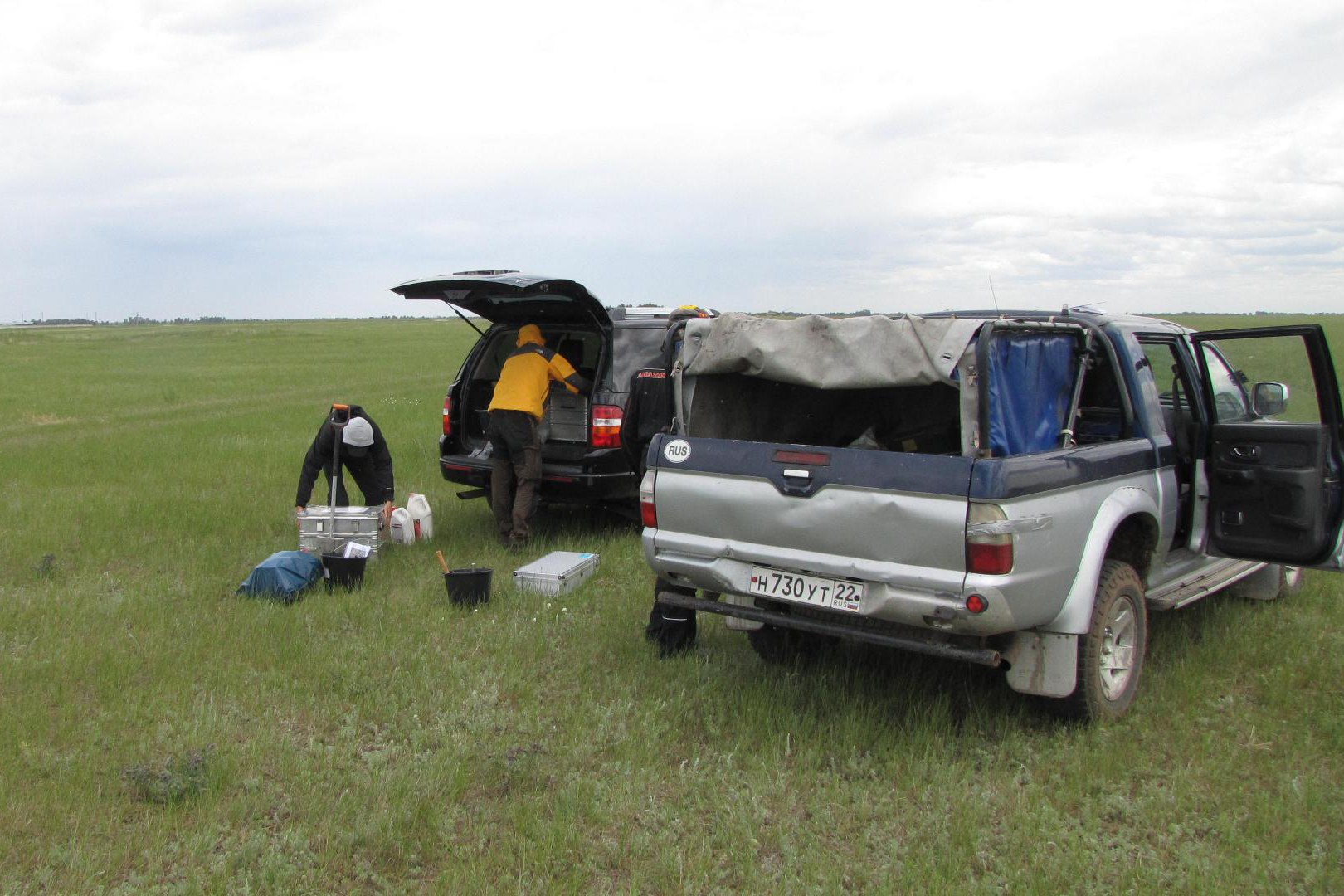Subproject: Effects of land use and agricultural management systems on wind erosion along a climatic gradient in the dry steppes
In the steppe regions of Kazakhstan and southwest Siberia, climate change and intensive agricultural use are causing soil degradation. Innovations for the sustainable use of agricultural resources can solve this problem. In the ReKKS project, German, Kazakh and Russian partners are working closely with local partners to develop and implement innovative, sustainable and climate-friendly agricultural concepts and methods to reduce soil erosion and improve the water, nutrient and carbon balance.
Subproject management:
Team:
- Moritz Koza
- Michael von Hoff
- Dorothee Kley
Subproject partners:
- Helmholtz Centre for Environmental Research GmbH, Leipzig-Halle
- Amazonen-Werke H. Dreyer GmbH & Co. KG, Hasbergen
- Umwelt-Geräte-Technik GmbH, Müncheberg
- Baraev Institute of Cereal Research, Shortandy (Kazakhstan)
- TOO Fermer 2002, Pervomayka, (Kazakhstan)
- TOO Amazone Kazakhstan, Nur-Sultan, Altai State Agrarian University, Barnaul (Russia)
- OOO Partnior, Poluyamki (Russia)
Background and aims:
Wind erosion is a persistent problem in the dry steppe of Kazakhstan. Continuous erosion, transport and deposition of soil material by wind is a major cause of humus loss and soil degradation on agricultural land. The type and intensity of land use is a major factor in soil loss. Especially open areas with a flat relief are subject to a high erosion risk. In extreme cases, wind erosion leads to the loss of usable arable soils by impairing their water and nutrient storage and carbon sink functions. Reducing wind erosion is an essential goal of climate-optimised soil management, which not only serves agriculture, but also soil and climate protection as well as sustainable ecosystem development of the temperate steppes.
For the geoecologists, the overarching goals are:
- Representation of spatial patterns of wind erosion disposition as a function of climate, soils and land use along a climate gradient in the dry steppe.
- Identification of wind erosion control variables and assessment of wind erosion disposition along this gradient.
- Quantify the effects of land use and cropping systems on wind erosion at site and regional scales.
- Identify optimal land use and cropping systems to reduce soil and humus losses from wind erosion.
- Development of training materials and modules.
Methodological approach:
- Laboratory: Physico-chemical soil analyses (texture, aggregate stability, organic matter, etc.)
- Field experiments: Mobile wind tunne, erosion traps
- Modeling
- GIS
Comparative texture and carbon analyses of the soil in the erosion zone and in the sediment trap are aimed at assessing the selective erosion of certain grain sizes as well as the contribution of wind erosion to use-related humus losses and the resulting general impairment of site quality. From this, it is necessary to provide information and recommendations for action for site-adapted, climate-optimised agricultural use of the dry steppe while minimising soil and humus losses through erosion.
In order to evaluate the success of erosion-minimising management systems, it is necessary to establish an in-situ system for analysing the sediment transport caused by wind erosion and to quantify the sediment load under varying landscape and use conditions. A mobile wind tunnel allows quantification of soil erosion depending on the control variables: meteorological conditions, soil properties, soil moisture, crop type and tillage.
Results:
1. Agricultural used steppe soils are susceptible to wind and water erosion, especially the destruction of aggregates during snowmelt (slaking) favors subsequent soil loss due to wind erosion.
2. The high mechanical stress applied to the soil during seedbed preparation determines the high soil loss by wind erosion. In field paths and unpaved roads are an underestimated source of erosion.
3. The by wind eroded material is enriched with organic carbon. The loss of the most mportant binding agent indirectly increases the erosion risk and could lead to unpredictable consequences in the global carbon cycle.
The results provide an important basis for illustrating the efficiency and innovativeness of the cultivation methods developed and the use of modern environmental monitoring systems and agricultural technology. Recommendations are derived from the results that lead to a reduction of the wind erosion risk of agricultural land and to adaptation measures to climate change in the study region.

